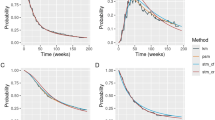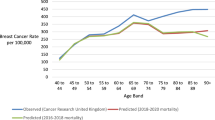Abstract
This paper presents the economic evaluation from a hospital’s perspective of the investment in positron emission tomography, adopting a real options approach. The installation of this equipment requires a major capital outlay, while uncertainty on several key variables is substantial. The value of several timing strategies, including sequential investment, is determined taking into account that future decisions will be based on the information available at that time. The results show that adopting this approach may have an impact on the timing of investment, because postponing the investment may be optimal even when the Expected Net Present Value of the project is positive.
Similar content being viewed by others
Notes
Possible sources of uncertainty in this field include the equilibrium price of new drugs, chances that the new technology influences clinical practice and patients’ outcomes and estimates of costs and benefits that can be updated as more evidence becomes available.
The half-life of the most common tracer (F-18-Fluorodeoxyglucose) is about 110 minutes. Therefore the site of production should normally be located no more than 2 hours traveling time from the scanning facility.
These limits are lower for the earliest period in which the scanner is in operation (See Table 1).
In what follows, primes are introduced for variables at the regional level in order to distinguish them from the corresponding variables at the catchment area level.
The regulator cannot decide whether the new scanner will be installed within a Fully Equipped PET or not. The size of new capacity is affected by this decision. In converting g t into G t we refer to the capacity of project P.
The relationship between the number of scanners and the number of FEPs will be discussed in more details in Section 6.
This is relevant because this assumption was actually made by the Hospital Trust in previous assessments.
Current recommendations in Italy, in accordance with the international literature, include performing PET scans in the management of the following cancers: brain, breast, colorectal, head and neck, lung (non-small cell, small cell and solitary pulmonary nodule), lymphoma (Hodgkin’s and non-Hodgkin’s), malignant melanoma, oesophageal and thyroid [36].
Retrospective studies and modelled decision tree analyses have suggested that information provided by 18F-FDG PET affect clinical management in 20–40% of all cases of cancer [37].
This is calculated on the deterministic number of patients for each year.
This reflects the estimate of the Italian Association of Nuclear Medicine that a good ratio would be one cyclotron every four PET scanners.
References
Dixit A, Pindyck RS (1995) The options approach to capital investment. Harvard Bus Rev 73(3):105–115
Dixit A, Pindyck RS (1994) Investment under uncertainty. Princeton University Press, Princeton
Schwartz ES, Trigeorgis L (2001) Real options and investment under uncertainty: classical readings and recent contributions. MIT, Cambridge
Palmer S, Smith PC (2000) Incorporating option values into the economic evaluation of healthcare technologies. J Health Econ 19(5):755–766
Abrams HL, McNeil BJ (1978) Medical implications of computed tomography (“CAT scanning”). Part I. New Engl J Med 298(5):255–261
Batista RN (1989) Innovation and diffusion of health related technologies. A conceptual framework. Int J Technol Assess Health Care 5(2):227–248
Gazelle GS, McMahon PM, Siebert U, Beinfeld MT (2002) Cost-effectiveness analysis in the assessment of diagnostic imaging technologies. Radiology 235(2):361–370
Bodenheimer T (2005) High and rising health care costs. Part 2: technologic innovation. Ann Intern Med 142(11):932–937
Lasserre P, Moatti J, Soubeyran A (2006) Early initiation of highly active antiretroviral therapies for AIDS: dynamic choice with endogenous and exogenous learning. J Health Econ 25(3):579–598
Driffield T, Smith PC (2007) A real options approach to watchful waiting: theory and an illustration. Med Decis Mak 27(2):178–188
Institute for Clinical Evalutative Sciences (2004) Health technology assessment of positron emission tomography (PET) in oncology—a systematic review. Institute for Clinical Evalutative Sciences, Toronto
Juweid ME, Cheson BD (2006) Positron emission tomography and assessment of cancer therapy. N Engl J Med 354(5):496–507
Bar-Shalom R, Yefremov N, Guralnik L, Gaitini D, Frenkel A, Kuten A, Altman H, Keidar Z, Israel O (2003) Clinical performance of PET/CT in evaluation of cancer: additional value for diagnostic imaging and patient management. J Nucl Med 44(8):1200–1209
Groves AM, Cullum I, Syed R, Nagabushan N, Kayani I, Pakzad F, Ell PJ (2005) How often do patients undergo repeat PET or PET/CT examinations? Experience from a UK institution. Nucl Med Commun 26(2):137–139
Bedford M, Maisey MN (2004) Requirements for clinical PET: comparisons with Europe. Eur J Nucl Med Mol Imaging 31(6):208–221
Cleemput I, Camberlin C, Van den Bruel A, Ramaekers D (2008) Methodology for calculating a country’s need for positron emission tomography scanners. Int J Technol Assess Health Care 24(1):20–24
Dahlbom M, Hoffman EJ, Hoh CK, Schiepers C, Rosenqvist G, Hawkins RA, Phelps ME (1992) Evaluation of a positron emission tomography (PET) scanner for whole body imaging. J Nucl Med 33:1191–1199
Bradbury I, Facey K, Laking G, Sharp P (2003) Investing in new technology: the PET experience. Br J Cancer 89(2):224–227
Rodríguez Garrido M, Asensio del Barrio C (2004) PET-TAC: indicaciones, revisión sistemática y meta-análisis. IPE-04/41. Agencias de Evaluación de Tecnologias Sanitaria, Madrid, Spain. In Spanish. http://www.isciii.es. Accessed 14 Jan 2008
Schoder H, Erdi YE, Larson SM, Yeung HW (2003) PET/CT: a new imaging technology in nuclear medicine. Eur J Nucl Med Mol Imaging 30(10):1419–1437
Townsend DW, Carney JP, Yap JT, Hall NC (2004) PET/CT today and tomorrow. J Nucl Med 45(Suppl 1):4S–14S
Facey K, Bradbury I, Laking G, Payne E (2007) Overview of the clinical effectiveness of positron emission tomography imaging in selected cancers. Health Technol Assess 11(44):1–288
Perkins AC, Gordon I, Read J, Ellis B, Professional Standards and Education Committee of the British Nuclear Medicine Society, Allen R, Clarke SE, Garner C, Hilson AJ, Frank JW, McCool D, Nicol A, Prescott MC, Ryan PJ, Shields RA, Tindale WB (2006) Training of staff for the delivery of PET/CT services in the UK. Nucl Med Commun 27(12):1005–1010
Department of Health (2004) A framework for the development of positron emission tomography (PET) services in England. Department of Health, London
Morland B (2004) Positron emission tomography (PET)—diagnostic and clinical use. INAHTA brief issue 2004/80. The Norwegian Centre for Health Technology Assessment (SMM), Oslo, Norway
Maisey MN (2002) Overview of clinical PET. Br J Radiol 75(Spec No):S1–S5
Agency for Health Care Research and Quality (AHCRQ) (2004) Positron emission testing for six cancers (brain, cervical, small cell lung, ovarian, pancreatic and testicular). US Department of Health and Human Services, Rockville
Brandbury I, Bonell E, Boynton J, Cummins E, Facey K, Iqbal K, Laking G, McDonald C, Parpia T, Sharp P, Single A, Walker A (2002) Positron emission tomography (PET) imaging in cancer management. Health Technology Assessment Report 2. Health Technology Board for Scotland, Glasgow
Williams R, Wright J (1999) Epidemiological issues in health needs assessments. BMJ 316(7141):1379–1382
Donahue JX (2003) Certificate of need process: an assessment of the need for PET. Med Health R I 86(5):147–149
National Institute for Clinical Excellence (NICE) (2005) Health needs assessment: a practical guide. Health Development Agency, London
Torbica A, Fattore G (2005) The essential levels of care in Italy: when being explicit serves the devolution of powers. Eur J Health Econ 6(Suppl 1):46–52
Agenzia Regionale Socio-Sanitaria del Veneto (2007) Tomografia ad emissione di positroni (PET): valutazione del fabbisogno e piano di investimento per la regione veneto. Quaderno n. 3. Venezia, Italy. In Italian. https://www.arssveneto.it. Accessed 14 Jan 2008
Hertz D, Thomas H (1983) Risk analysis and its applications. Wiley, Chichester
Grande E, Inghelmann R, Francisci S, Verdecchia A, Micheli A, Capocaccia R, De Angelis R (2006) Estimating regional cancer burden in countries with partial registration coverage: an application to all malignant neoplasms in Italy over the period 1970–2010. Eur J Cancer 42(18):3236–3245
Liberati A, Longo G, Ballini L, De Palma R (2007) FDG-PET in oncologia. Criteri per un uso appropriato. Dossier n. 157. Agenzia Sanitaria Regionale, Bologna, Italy. In Italian. http://asr.regione.emilia-romagna.it. Accessed 14 Jan 2008
Gambhir SS, Czernin J, Schwimmer J, Silverman DHS, Coleman RE, Phelps ME (2001) A tabulated summary of the FDG PET literature. J Nucl Med 42(5 Suppl):1S–93S
Claxton K (1999) The irrelevance of inference: a decision-making approach to the stochastic evaluation of health care technologies. J Health Econ 18(3):341–364
Author information
Authors and Affiliations
Corresponding author
Rights and permissions
About this article
Cite this article
Pertile, P., Torri, E., Flor, L. et al. The timing of adoption of positron emission tomography: a real options approach. Health Care Manag Sci 12, 217–227 (2009). https://doi.org/10.1007/s10729-008-9085-4
Received:
Accepted:
Published:
Issue Date:
DOI: https://doi.org/10.1007/s10729-008-9085-4




